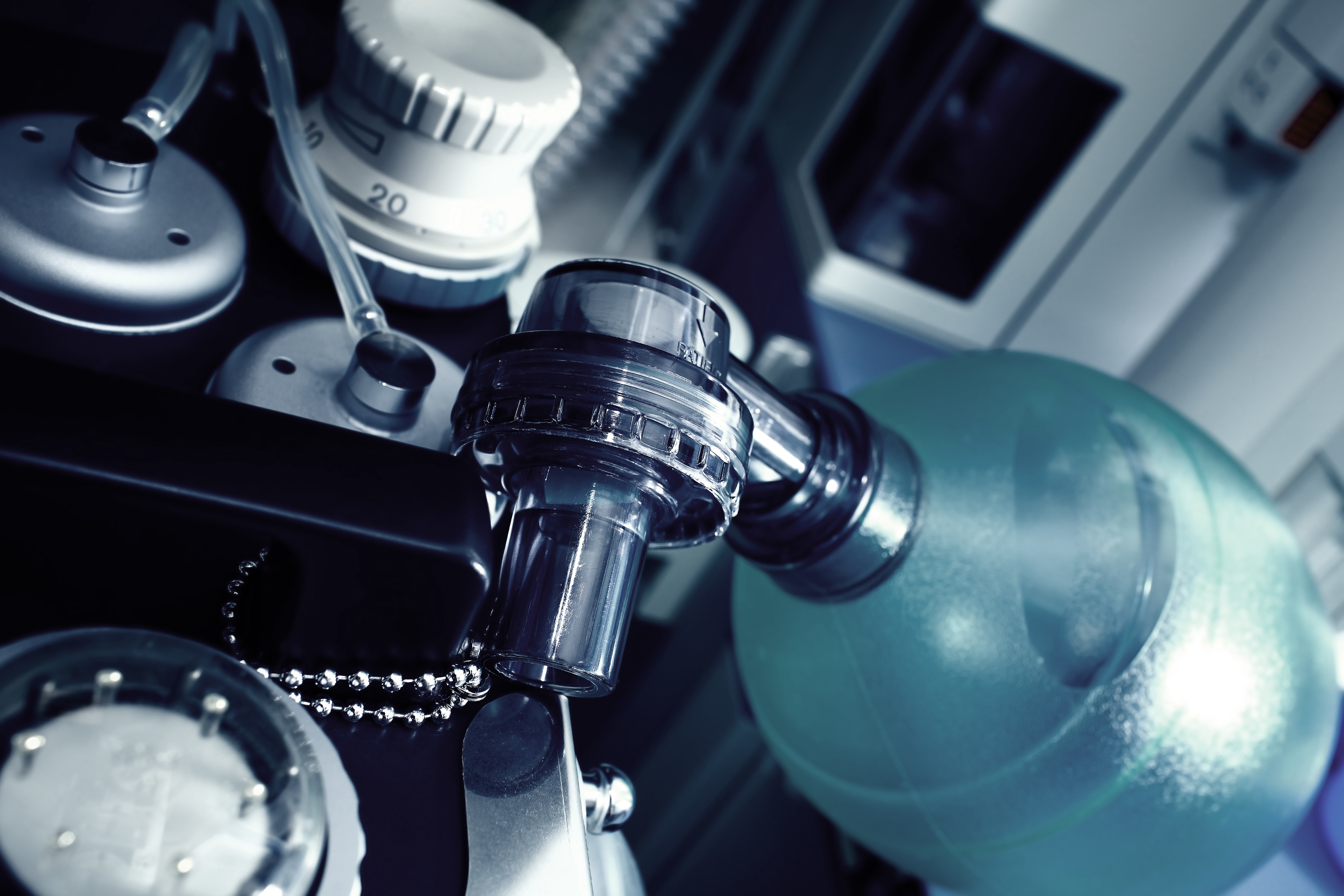
Since the 18th century, rebreathing circuits in closed environments have been used for everything from deep-sea diving to mining.1 Carbon dioxide (CO2) absorbents are vital chemicals in rebreathing systems, as they convert the CO2 from a person’s exhalations to a non-toxic substance.2 In 1923, CO2 absorbents were incorporated into anesthesia circuits, allowing for the modern use of low-flow anesthesia and recycling of the anesthetic agent.1 Today, CO2 absorbents play vital roles in anesthesia circuits and rebreathing systems in anesthesiology. Given the benefits and disadvantages of the various available CO2 absorbents,3 there is ample room for research, improvement and market competition.
Currently, the CO2 absorbent market can be segmented based on product, such as soda lime, medisorb, dragersorb, amsorb, litholyme and others; traditional or premium type; granular or powdered form; end user, such as hospital or clinic; and region, such as North America, Europe, Asia Pacific, Latin America or Middle East.4 In 2018, across product types, the medisorb segment dominated the global anesthesia CO2 absorbent market with 29.72 percent share of revenue.5 Also, the North American region is now the largest supplier of CO2 absorbents, with a production market share of nearly 40 percent. Europe is the second largest supplier, producing about 28 percent in 2015.6 Additionally, North America and Europe are the largest consumers of CO2 absorbents, at 38 and 26 percent, respectively.7 Clearly, CO2 absorbents are not equal across product types or world regions.
Several factors influence trends in the CO2 absorbent market. Market drivers include the increasing occurrence of accidents, chronic illnesses and surgical procedures, as well as a growing geriatric population.5,8 Due to these health-related factors, the hospital segment in particular is expected to grow at a compound annual growth rate (CAGR; rate of return) of 11.02 percent from 2019 to 2026.5 Additionally, institutes such as the Centers for Disease Control and Prevention (CDC) and the Anesthesia Patient Safety Foundation (APSF) provide guidelines and safety limitations that—by encouraging proper production and consumption—can support the CO2 absorbent market’s growth later on.8 Indeed, the global anesthesia CO2 absorbent market is expected to reach $112.14 million by 2026, at a CAGR of 8.94 percent from 2019 to 2026.5 Meanwhile, though, research on the degradation of inhaled anesthetics and the potential for anesthetics to interact with CO2 absorbents could hinder the growth of the market.8,9 Another factor that could play into market revenue is the global average price of anesthesia CO2 absorbents, which is trending downward.6 Overall, the CO2 absorbent market is expected to grow until 2026, with safety remaining an important aspect of consumption and production.
As key players in anesthesiology, CO2 absorbents must be as safe and efficient as possible. Through production of various types across several regions, a competitive market for CO2 absorbents has developed. The CO2 absorbent market is projected to grow over the next seven years, with notable upward trends in hospital consumption. The market will likely be affected by an increase in surgical procedures, guidelines from governing organizations and research studies on product safety.
- Rose G, McLarney JT. Carbon Dioxide Absorber. Anesthesia Equipment Simplified: McGraw-Hill Education; 2014.
- Port J. Oxygen generators and carbon dioxide scrubbers explained. Cosmos. Web July 27, 2016.
- Yamakage M, Takahashi K, Takahashi M, Satoh JI, Namiki A. Performance of four carbon dioxide absorbents in experimental and clinical settings. Anaesthesia. 2009;64(3):287–292.
- Kumar N. Anesthesia CO2 Absorbent Market Growth, Size, Key Players And Forecast 2019 To 2026. The Bay State Herald. September 27, 2019.
- Fior Markets. Anesthesia CO2 Absorbent Market by Product Type (Soda lime, Medisorb, Dragersorb, Amsorb, Litholyme, Others), End User (Hospitals, Clinics), Regions, Global Industry Analysis, Market Size, Share, Growth, Trends, and Forecast 2019 to 2026. July 2019.
- Anesthesia Monitoring Devices Market Analysis And Growth Rate to 2026 With Market Players [press release]. July 9, 2019.
- Anesthesia CO2 Absorbent Market Size to surge at 8.2% CAGR Poised to Touch USD 82 Million by 2024 [press release]. September 13, 2019.
- Anesthesia CO2 Absorbent Market By Product Type (Soda Lime, Medisorb, Dragersorb, Amsorb, Litholyme, and Others), Type, By Form, End-User, And Segment Forecasts, 2016-2026. May 2019.
- Baum JA, Woehlck HJ. Interaction of inhalational anaesthetics with CO2 absorbents. Best Practice & Research: Clinical Anaesthesiology. 2003;17(1):63–76.

